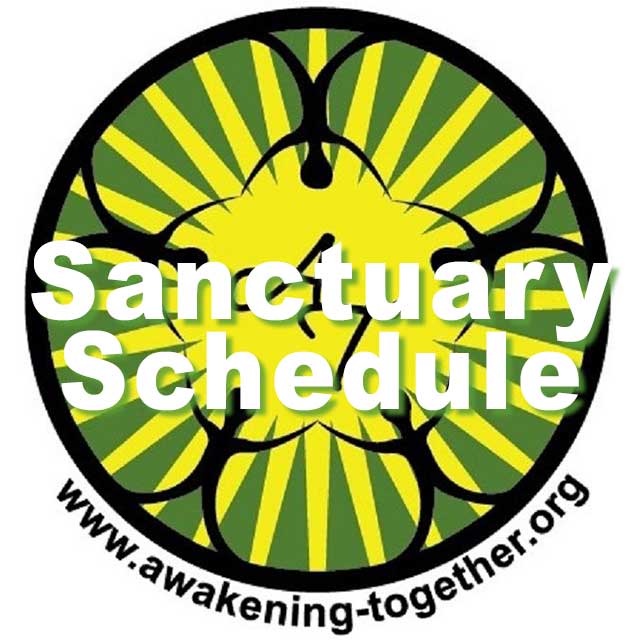Workbook Lesson 23, I can escape from the world I see by giving up attack thoughts
I am so excited about today’s workbook lesson. This lesson tells us exactly how to heal, and it tells us “this way cannot fail.” Let me outline the steps to healing that are outlined in this workbook lesson.
- “You must learn that it is [attack thoughts] you do not want.” Although this sentence is stated in the negative, ‘you do not want’, it is a statement of desire. Our first step in healing is to want healing. Honestly, the more we want healing, the more we will heal. If you feel that it is possible that you do not want healing enough, it is very good to put contemplative-effort, inquiry-effort and awareness-effort into increasing your desire for freedom (for healing). You can do this by noticing how much you are suffering and/or how much others are suffering while continually asking yourself questions like, “Is this the world I want to see?”As you recognize that you do not want suffering, the desire for freedom increases. However, remember we saw that the brain is re-programmed best with a positive goal. So, the awareness that you do not want suffering is used to drive up the awareness that you do want freedom, happiness, love, etc. And then focus on the positive goal. Any positive goal that feels genuine for you and that motivates you to spiritual practice is good.
- “This change [from attack to love, darkness to light, illusion to truth] requires, first, that the cause be identified and then let go, so that it can be replaced. The first two steps in the process require your cooperation. The final one does not.” Without stating it directly, this is talking about Rest, Accept and Trust.First the cause needs to be identified. The cause is casting attention on thoughts that have been received by the mind. Sometimes the thought comes in and we cast attention on it so quickly, that we never see the thought. Our first indication that we have cast attention on a thought is the emotion we are feeling. Rest and Accept is what we do when we notice we have slipped into the cause by casting attention on a thought (or thought stream). Rest and Accept is how we let go. Rest is the opposite of casting more attention. Accept is the opposite of repressing a false belief in the form of emotion. Through resting the mind and accepting the emotion as it is, we let it go. Trust is realizing that Rest-Accept is the only part of the healing process that requires our cooperation.
- “Hold each attack thought in the mind as you say [the workbook lesson for the day].” One challenge to healing is that the neural pathways in our brain are so well formed that they are like waterslides. The “attack thoughts” slip by so fast that we do not really see them. It’s like our brain is on automatic pilot.Let me give you an analogy. When you first learned to drive a car, you had to really pay attention to everything you did. “Put the key in. Now put your feet on the break. Turn the key in the ignition. That’s enough; let go of the key. Keep your foot on the brake and put the car in reverse. Turn and look over your shoulder. Now move your foot from the brake to the gas and give it just a little gas; not too much; back out slowly, etc. …”Now you don’t have to give so much attention to driving. You can carry on a conversation with someone and do all of this pretty efficiently because neural pathways have been formed in your brain. Your brain can almost drive a car without your attention, and unfortunately sometimes it does drive a car without your attention. That’s an example of how the brain can operate on auto-pilot because of well-formed neural pathways.The brain can also believe thoughts on auto-pilot because a neural pathway has been formed for those types of thoughts. If a completely alien thought is received for which there is no neural pathway, it will call to your attention so a value-decision can be made, but if you have already formed grooves in your brain for a certain type of thought, the brain doesn’t need your attention to process that thought through the already formed neural pathway.
However, the brain does need your attention to stop a thought from sliding down an old neural pathway, and it does need your attention to create a new neural pathway. This is why you have to hold a thought in awareness as you say the workbook lesson for the day.
Imagine the thought as a child who is about to go down a waterslide that is too dangerous for the child’s age. You need to reach out, grab the child and then gently redirect it to an age-appropriate slide.
That’s similar to what we are doing as we heal (reprogram the brain). We reach out and grab the thought with our awareness and hold it still so it doesn’t slide down the old neural pathway, and then by holding it as we say the current day’s workbook lesson, we redirect it to a new neural pathway.
The new neural pathway is a different type of waterslide. Instead of a waterslide of belief, which tosses the thought back into our oneness to be shared and sent back to us, the new one is a waterslide that takes the thought to the exit door, and the thought drops out of the game. A Course in Miracles calls this process “forgiveness.”
- “There is no point in trying to change the world. It is incapable of change because it is merely an effect. But there is indeed a point in changing your thoughts about the world. Here you are changing the cause.”When we give too much attention to the world, we are not giving attention to our thoughts and they are rushing around splashing down the old neural pathways doing what we have already trained them to do. Since we are not alone in experiencing the effects of our thoughts, the world continues to turn in the same way that it always has. If we want to have a positive effect on the world, we must turn our attention inward and give healing attention to the image-maker, the process of casting attention that goes on within our minds.



